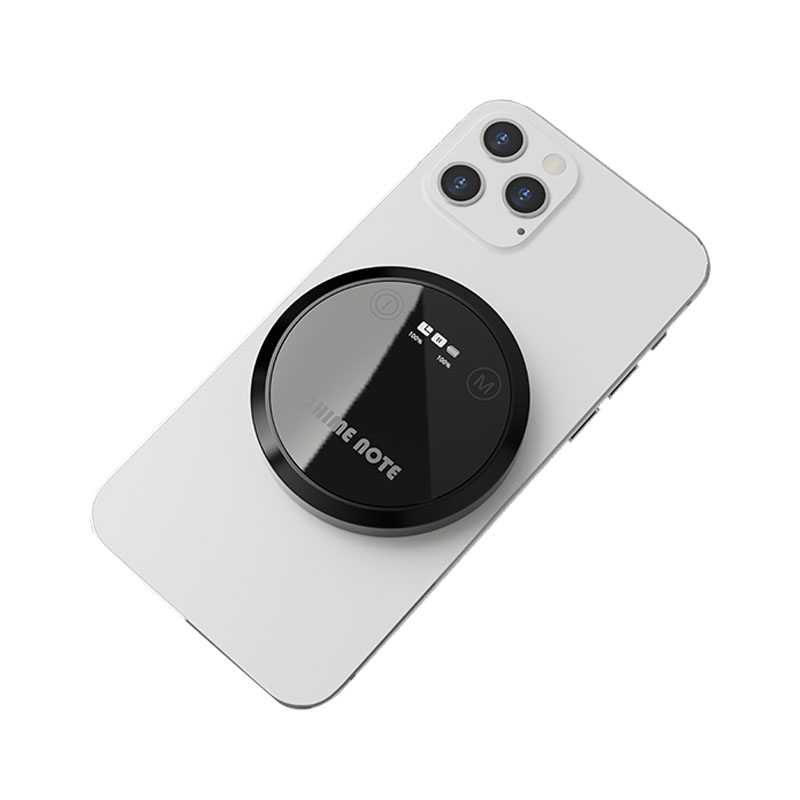How does AI voice recorder use advanced AI noise reduction technology to ensure that clear audio can be recorded in various noisy environments?
Release Time : 2025-03-26
The way AI voice recorder uses advanced AI noise reduction technology to ensure that clear audio can be recorded in various noisy environments is mainly reflected in its built-in AI chip and related noise reduction algorithms.
AI noise reduction technology principle
AI voice recorder learns noise reduction capabilities through AI models, which are usually based on artificial neural networks, such as deep neural networks (DNN), convolutional neural networks (CNN) or recurrent neural networks (RNN). These models learn how to separate target signals (such as human voices) from noise signals through training with a large amount of noisy and clean voice data. During the training process, the model predicts the amplitude spectrum of noisy speech and suppresses the noise components in it to obtain an estimated clean voice signal.
Specific noise reduction technology application
Dual-standard pickup combined with AI chip: The dual-standard pickup built into the recorder can capture a wider range of sounds, and the AI chip can process these sound data in real time. Through advanced algorithms, the AI chip can identify and separate target sounds (such as human voices) from background noise.
Frequency domain-based noise reduction algorithm: The recorder converts the original audio signal into a frequency domain signal and uses the model to predict the amplitude spectrum to suppress noise. This method shows advantages in dealing with non-steady-state and transient noise, and can significantly improve the clarity of the recording.
Adaptive noise reduction: The AI noise reduction model can adaptively adjust the noise reduction parameters according to changes in the environment. For example, in a noisy coffee shop, the model will increase the suppression of high-frequency noise; while in a quiet office, it will reduce the noise reduction intensity to maintain the naturalness of the sound.
High-definition recording: Even in a noisy environment, AI voice recorder can record clear and high-quality audio.
Easy operation: Users can enjoy the clear recording experience brought by AI noise reduction technology with just one click.
Applicable to multiple scenarios: Whether it is a business meeting, lecture, interview or recording needs during travel, AI voice recorder can easily cope with it.
In summary, AI voice recorder can record clear audio in various noisy environments through its built-in AI chip and advanced noise reduction algorithm. The application of these technologies not only improves the clarity of recording, but also brings users a more convenient and efficient recording experience.
AI noise reduction technology principle
AI voice recorder learns noise reduction capabilities through AI models, which are usually based on artificial neural networks, such as deep neural networks (DNN), convolutional neural networks (CNN) or recurrent neural networks (RNN). These models learn how to separate target signals (such as human voices) from noise signals through training with a large amount of noisy and clean voice data. During the training process, the model predicts the amplitude spectrum of noisy speech and suppresses the noise components in it to obtain an estimated clean voice signal.
Specific noise reduction technology application
Dual-standard pickup combined with AI chip: The dual-standard pickup built into the recorder can capture a wider range of sounds, and the AI chip can process these sound data in real time. Through advanced algorithms, the AI chip can identify and separate target sounds (such as human voices) from background noise.
Frequency domain-based noise reduction algorithm: The recorder converts the original audio signal into a frequency domain signal and uses the model to predict the amplitude spectrum to suppress noise. This method shows advantages in dealing with non-steady-state and transient noise, and can significantly improve the clarity of the recording.
Adaptive noise reduction: The AI noise reduction model can adaptively adjust the noise reduction parameters according to changes in the environment. For example, in a noisy coffee shop, the model will increase the suppression of high-frequency noise; while in a quiet office, it will reduce the noise reduction intensity to maintain the naturalness of the sound.
Noise reduction effect and advantages
High-definition recording: Even in a noisy environment, AI voice recorder can record clear and high-quality audio.
Easy operation: Users can enjoy the clear recording experience brought by AI noise reduction technology with just one click.
Applicable to multiple scenarios: Whether it is a business meeting, lecture, interview or recording needs during travel, AI voice recorder can easily cope with it.
In summary, AI voice recorder can record clear audio in various noisy environments through its built-in AI chip and advanced noise reduction algorithm. The application of these technologies not only improves the clarity of recording, but also brings users a more convenient and efficient recording experience.







